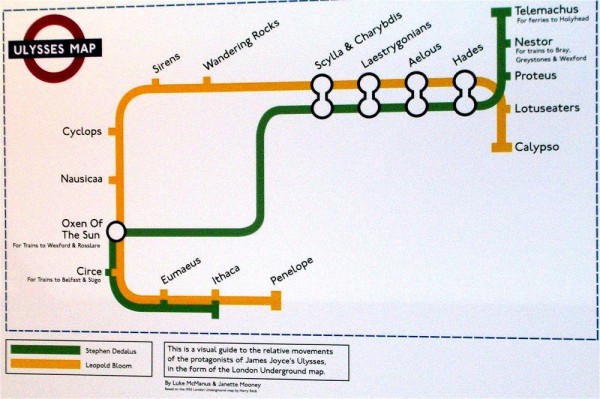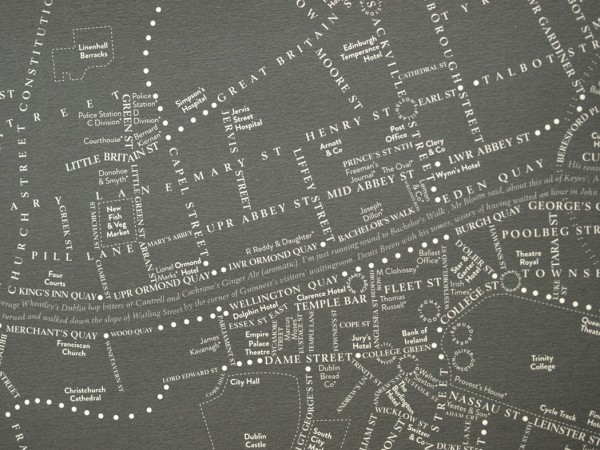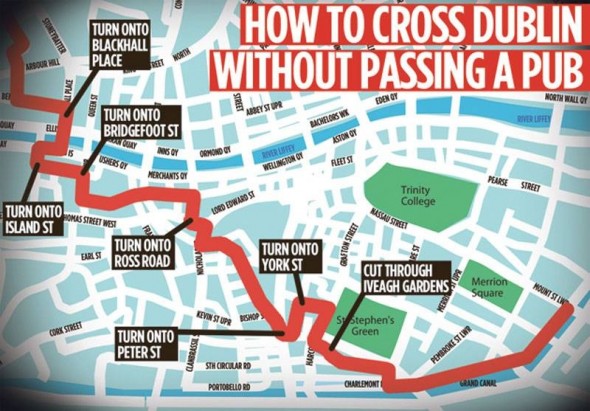Ulysses, mapped
The academic

“Instead of perpetuating the pretentious nonsense of Homeric, chromatic, and visceral chapter headings, instructors should prepare maps of Dublin with Bloom’s and Stephen’s intertwining itineraries clearly traced.” Vladimir Nabokov’s hand drawn map.
The Situationist

‘Joyce Walks,’ 2008, a “Google maps mashup which remaps routes from James Joyce’s Ulysses to any city in the world, generating walking maps to be used as the basis of situationist inspired psychogeographical dérives.”
The Paper Monument

‘Dublin 1904,’ Matthew Picton, 2011. From the artist’s statement: “The sculpture allows for Joyce’s words and passages to be read in fragments, allowing for a continuous re-contextualization. The whole city is filled with a multitude of voices, both spoken and thought, voices filled with the exquisite poetry and poignancy of James Joyce’s writings.”
The Tube

‘Ulysses Metro Map,’ Luke McManus & Janette Mooney, 2011
The Know-it-all

‘Quote Map,’ UCD, 2012.
The Just Our Type

‘Leopold’s Day,’ Rachel Kerr, 2012
The Designated Walker

“Good puzzle would be to cross Dublin without passing a pub.” – Leopold Bloom. Rory McCann’s ‘How to Cross Dublin Without Passing a Pub,’ 2014
From BLDGBLOG:
What if Ulysses had been written before the construction of Dublin? That is, what if Dublin did not, in fact, precede and inspire Joyce’s novel, but the city had, itself, actually been derived from Joyce’s book? At the very least, this would be an awesome proposition for a design studio: read Ulysses and then design the city it describes… The differing responses would be fascinating.
[..]
If you fed Ulysses through a 3D printer, what might the resulting shapes be? What if the unexpected blobs and shapes could be considered a translation of the novel? Inspired by Bloomsday, then, it seems well-timed to ask not only how our cities can best be mapped – and if narrative is, in fact, the ideal cartographic strategy – but what other physical possibilities exist for narrative expression. Put another way: what if James Joyce had been raised in an era of cheap 3D printers? After all, given the possibilities outlined above, we might even someday be justified in concluding that Dublin itself is a written text, and that Ulysses is simply its most famous translation.
